
Our Cattle
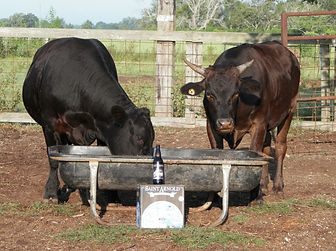
What IS Kobe?
The cattle originally recognized in 1943 as “Kobe beef” were from herds in the Kobe area of Japan, and could be any of four breeds of Wagyu cattle: the Akaushi (Japanese Red), the Kuroushi (Japanese Black), the Japanese Polled and the Japanese Shorthorn.
The increase in popularity of Japanese beef in the United States has led to the creation of American Kobe beef, taken from domestically-raised Wagyu crossbred (F1) with Angus cattle,
to meet the demand.
It is a requirement that Kobe beef, even American Kobe beef to come from the Tajima strain (from the Japanese black) because this is the strain that was bred for beef marbling, not size or dairy production.
It is also required that the cattle are fed a special diet that includes beer or beer mash.
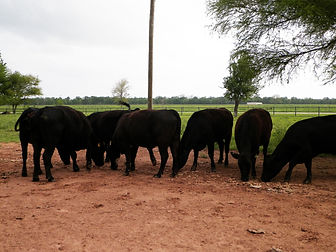

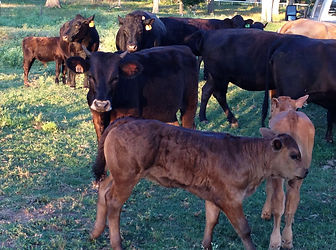
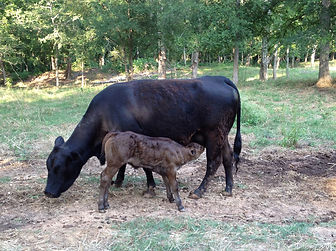
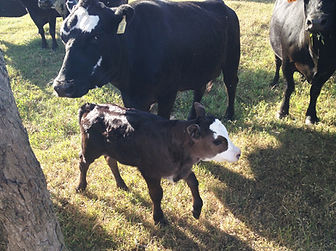
When it comes to livestock, especially cattle, genetics are everything. Compared to traditional American cattle, Wagyu cattle are genetically different in a number of ways that make them ideal for the modern rancher.
Bred over generations in Japan, Wagyu cattle were typically raised by low-income farmers. The cattle were fed poor quality diets consisting of rice straw, but were always bred for quality of beef where size of the animal has always been primary concern in the American beef industry. This manipulation of diet caused the Wagyu’s metabolism to adapt over a period of 200 years. Resulting in Wagyu beef showing superior marbling on low-quality diets. A pure Wagyu steer, when butchered, will have high-marbling within the meat without possessing the large ring of fat around the muscle that you typically see in the American supermarket. This is simply because of a genetic difference in the way their bodies metabolize fat.
Our American Kobe beef, produced by an F1 cross of Wagyu bulls and American Angus cows, is in a league of its own. American beef is rated on a USDA scale of Select, Choice, and Prime. American Kobe beef requires its own category because it starts above Prime.
To get an idea of its richness and what makes our beef so special, you have to understand the chemistry. The fat composition in the marbling will begin to melt at 77 degrees Fahrenheit, the same as butter—causing it to literally “melt in your mouth.” This results in recommended preparations not exceeding medium temperatures, thus keeping the fat from liquefying.
American Kobe beef has less saturated fat than a typical American Angus, a 2:1 ratio in fact,
and contains high levels of oleic acid (the good fatty acids found in olive oil that prove to help reduce cholesterol). In addition, strict guidelines dictate that beef—in order to be labeled Kobe—must also be free of hormones and antibiotics.
Texas T Kobe’s brand of beef is produced by introducing enough of the American Angus strain to give the crosses a wider rear end and larger frame for more meat production. The genetic mixture also alters the meat slightly to compensate for the American palate which typically leans away from the over-bearing richness of pure Wagyu beef.
For beef to be classified as Kobe, in addition to being from the Tajima strain of the Wagyu bloodline, they have to be fed a special diet — typically based on grass — but also including a grain mixture and beer. Yes, beer. This is a trait that was developed over the years in Japan where the cattle were fed rice straw, rice wine, and rice beer as part of their daily diet to be bred for tastier beef. Scientists and cattle geneticists have determined that the beer itself aids in the animal’s natural ability to produce fine marbling within the beef, also helping to give it a more desirable flavor. We haven’t noticed different flavors in our beef from different types of beer, but we have noticed that our cattle heavily favor dark, craft beers as opposed to light or pale ales. It’s a common misconception that the beer will intoxicate the cattle. An animal that big would have to drink far more beer than its stomach could hold to show any drunk-like effects. It will, however, cause them to get the “munchies” and eat more feed—similar to what beer will do to humans.
One drawback is that a full-blood Wagyu steer will take approximately six months longer than normal to reach finishing weight, due to the animal’s genetically smaller frame. A cross
with American Angus will still finish slower than a pure American steer at 22 to 26 months when
pushed to approximately 1400lbs.
The cattle themselves are more docile than typical American breeds, and are much more desirable for ranchers due to that fact. Another sought-after quality — that most wouldn’t initially see as positive — is the low birth weight of the calves, generally nudging the scales at a mere 45-50lbs. Seasoned ranchers see the benefit in this trait, being that a Wagyu bull can breed a first-time American heifer and not cause birthing difficulties that would require constant monitoring and possible calf-pulling by the rancher during labor. This saves time and money. The crosses will still finish at the same weight as an American breed despite the low birth weight
of the calves.
The cattle show a high-tolerance to Texas summers and Montana winters alike, and they will continue to breed during drought conditions.
Wagyu cattle possess genetic capabilities that, when crossed with American Angus, produce an American Kobe beef that is the essence of fine dining. At Texas T Kobe, we produce the absolute highest quality USDA inspected American Kobe beef that consistently grades above USDA Prime. We ensure 100% satisfaction with a “melt in your mouth” flavor that you will not find anywhere else.

